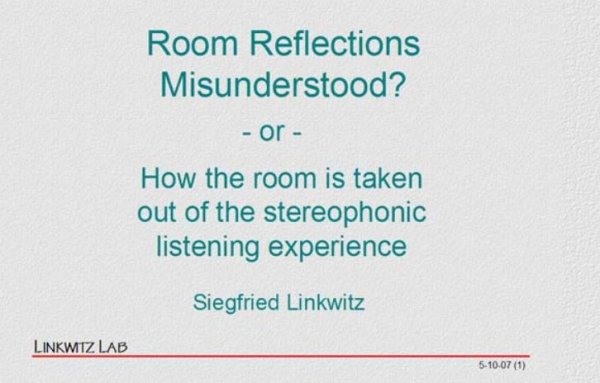And speakers can vary audibly, suffering FR and pair matching anomolies when you turn your head an inch. You could have your head in a vice and you'd have much greater coherency problems with multiple driver speakers than with headphones. Are you talking about cheap closed headphones? I've never heard of (or heard) many of the problems you're talking about. Got sources? You're right that a lot of headphones, even very good ones, have inaccurate FR, often because they are deliberately trying to compensate for the lack of room gain listeners are accustomed to. On the other hand, you can buy a pair of IEMs for <$200 that are as flat as Magicos in an anechoic chamber. You might not like the sound of them, though. Most people find them unnatural. But yes, when single drivers are millimeters from your eardrums and have sealed your ear canals in the process of insertion -- no room noise, no room distortion, no coherency or crossover or cabinet resonance issues -- it's about as close as you can have to a line into your brain, yes. resolution of detail can be stunning. Presentation? Staging? Very different. An acquired taste to say the least. But I can't say I've run into many people who don't believe they hear more detail on headphones. YMMV.
Tim
I really think you should follow up on some of the investigations and measurements Keith Howard has done

The variables I mentioned are much worse for headphones than speakers when measured, headband resonance is audible in most designs (this was covered in this months HiFi News btw and backed up with measurements).
BTW NO HEADPHONES have measured flat from what I have seen (another issues is which correction do you use but still allowing for this they are far from as flat as the S3 Magico, however one does need to then consider room interraction).
Pair matching, most headphones are over 10db in error, even the recent testing at Harman the average pair matching error was over 8db (over same primary FR Magico S3 is below 1.2db error).
Then there is also capsule interraction...
But still everyone feels they are perfect or have the very best resolution when measurements show they are far from it

If that interested read articles by Keith Howard and when Hifi News has done reviews with measurements.
Tim, you are an objectivist so I thought you would like to know just how poorly most headphones actually measure (using an artificial ear is critical); the only real benefit is removing room interraction and noise floor of environment but this is balanced out by aspects that the best speakers actually do better or that recordings are mostly created in the studio using ideal EQ for stereo loudspeaker listening rather than headphones (EQ would be different if done specifically with headphones).
I strongly suggest looking at actually how well headphones do not measure (for free could also look at innerfidelity that even Sean Olive mentions).
And finally just went to the Sean Olive blog-article and this is his footnote regarding measurements and mentioning innerfidelity:
S Olive blog said:
Tyll Hertsens at InnerFidelity has a large database of frequency response measurements of headphones that clearly illustrate the lack of consensus among manufacturers on how a headphone should sound and measure. There is even a lack of consistency among different models made by the same brand.
I reached the same conclusion without reading this blog and after following work by Keith Howard and seeing his results or even innerfidelity...
Anyway dropping this now as we are seriously digressing from OP, but bear in mind as well that measurements should show both the natural measurement and also corrected/compensated (which from what I understand can have different results depending upon one used).
Here is Sean's blog entry:
http://seanolive.blogspot.co.uk/2013/04/the-relationship-between-perception-and.html
Regarding headband resonance and measuring, I can only think of Keith Howard who has done recent work showing this interraction and its audibility, but others cover the more usual distortion with headphones.
Thanks
Orb







